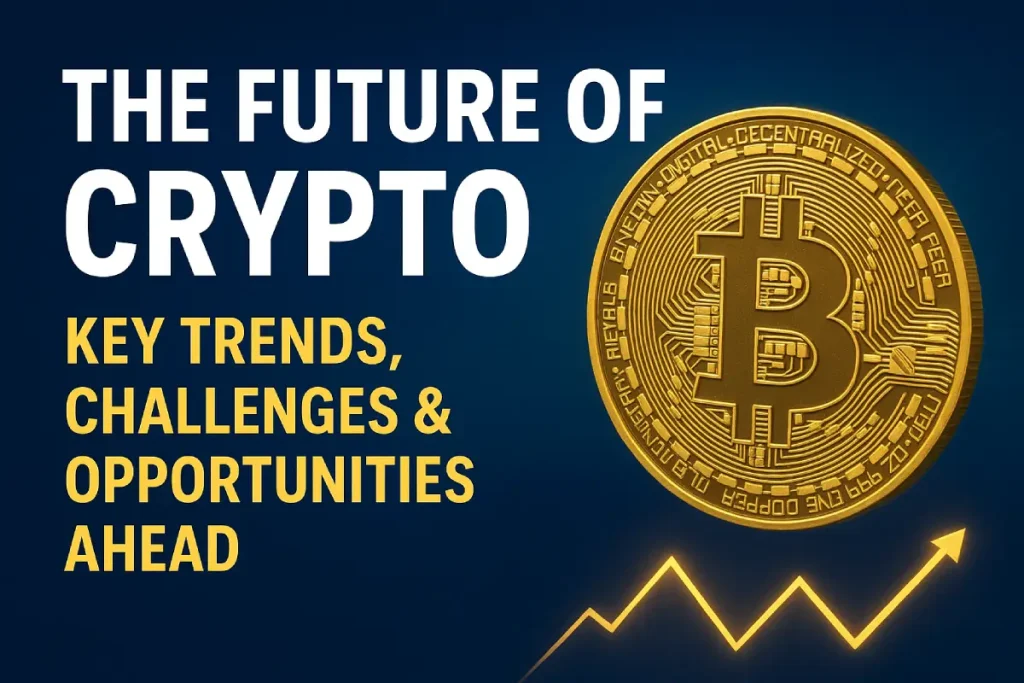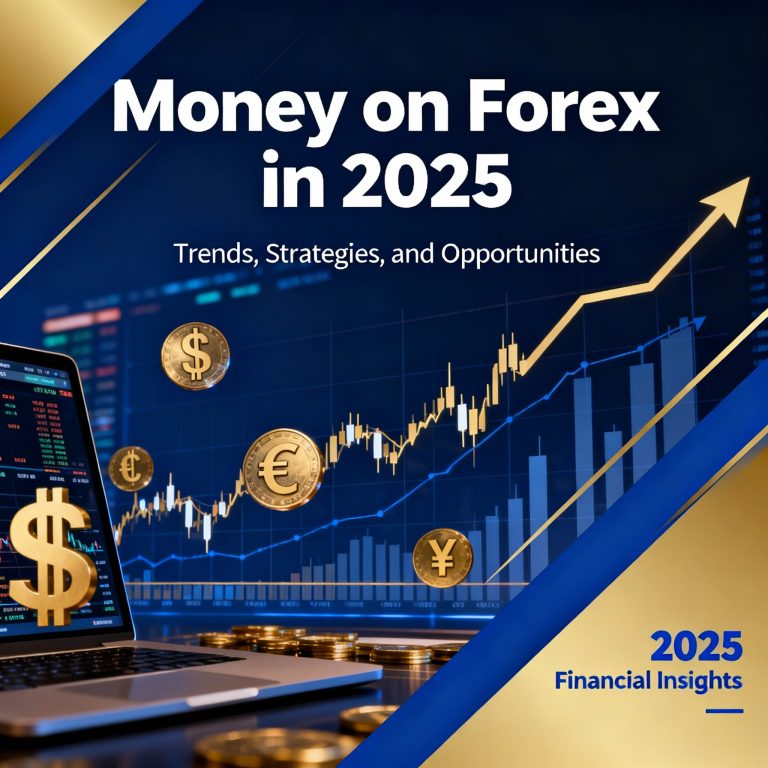Introduction
Cryptocurrencies have made significant progress since the publication of the Bitcoin whitepaper in 2008. The experiment in peer-to-peer cash has become a trillion-dollar market. In 2025, the future of Crypto is not focused only on price fluctuation or instant profits, but on institutional adoption, government regulations, innovative financial practices, and the incorporation of digital assets in everyday life.
Understanding the Present Before Predicting the Future
To get a sense of the potential future of crypto, let’s take an inventory of the current state:
- Market Size: The market cap of the global crypto market sits at just under $3.85 trillion, having declined from just over $4.1 trillion in August of this year, at a peak.
- Bitcoin’s Market Share: Bitcoin reigns supreme with 56% of the market share, priced between $113K–$116K, widely regarded as “digital gold.”
- Ethereum’s Network Utilisation: Ethereum is valued at around $4,400 and underpins decentralised finance, NFTs, and smart contracts. Analysts expect ETH will move closer to $7,000 by year-end through ETF inflows.
- A Slew of Altcoin Offerings: Solana, Polygon and the like, and even new offerings like Remittix are showing signs of growth, suggesting we are now in an ecosystem that expands far beyond simply BTC and ETH.
We can see that crypto has moved from speculation to the early foundations of the infrastructure.
What Is Driving the Future of Crypto?
1. Institutional Adoption
Institutions are now engaging in the space:
- ETFs: Bitcoin and Ethereum ETFs are now available for the average investor.
- Corporate Treasuries: Companies like MicroStrategy are holding billions in BTC as an inflation hedge.
- Funds and Banks: Pension and hedge funds are now allocating portions of their portfolios to digital assets.
Participation provides credibility and long-term strength.
2. Regulatory Landscape
Governments are realising they can’t ignore crypto.
- United States: A Strategic Bitcoin Reserve bluntly recognises BTC as a strategic asset.
- European Union: The MiCA Regulation is a single regulation that provides uniformity across 27 member states and lessens legal uncertainty.
- Asia: Hong Kong is focusing on regulated licenses for stablecoins; India is rationalising taxation to encourage tax compliance.
Effective regulation may slow down nefarious actors and increase mainstream adoption.
3. Stablecoins and CBDCs
Stable digital currencies are connecting traditional finance and crypto:
- Stablecoins: Having a market cap of more than $255 billion, and with USDT, USDC, and others driving trading, payments, and remittances.
- CBDCs: With pilot projects emerging from central banks in the U.S., EU, and China with the goal of having state-backed digital currencies to transform the payment system, it will also have relevance in transactions.
- Emerging Economies: In places such as Venezuela, where referring to stablecoins equivalent, stablecoins are a lifeline to protect its citizens against hyperinflation.
Implying that crypto isn’t just for traders, it has a true presence in the daily economic system.
4. Real-World Use Cases Have Never Been Wider
Crypto adoption has never stepped outside the trade-us-s to drive coin wins:
- Payments: Retailers and online merchants are increasingly accepting crypto, including Bitcoin, Ethereum, and stablecoins, including their digital versions of stablecoins or dollars.
- Remittances: Millions use crypto to make cross-border payments quicker and cheaper than global banks.
- Financial Inclusion: The billions of unbanked people and the chance for decentralised finance apps are now able to access credit, savings and financial services.
Daily endorsement of real-world use cases legitimises crypto in the global financial realm.
Innovations Reshaping the Market
Layered Networks & Meme Utility Tokens
Meme coins are evolving. Layer Brett (LBRETT) combines meme culture and serious tech to allow for near instant transactions and staking rewards as high as 3000% APY. It combines fun and function.
Altcoins with Real Utility
- Remittix (RTX): focus on global remittances, including raising $22 million and planning an upcoming wallet launch.
- Solana and Polygon: these are the stars of the scalability conversation, with competition for faster and cheaper decentralised applications.
- DeFi 2.0: These are the next-generation protocols that are tackling risk to liquidity drains while producing more authentic yields.
These developments provide meaningful differentiation of opportunities for investors.
Regulation vs Innovation: The Balancing Act
The ongoing tussle between regulation and innovation is unavoidable:
- Pros of Regulation: Increased trust, investor protection, and reduction of fraud.
- Cons of Overregulation: The challenges of heavy compliance burdens may slow smaller projects.
- The Sweet Spot: Innovation can happen when it occurs within a framework of safety and transparency.
The ecosystems that find that balance will lead the ever-evolving landscape.
The Future of Crypto – A Forward Look
A dominant coin will not own the future of Crypto, but an ecosystem where:
- Bitcoin retains its status as a reserve asset.
- Ethereum fuels decentralised applications and financial infrastructure.
- Stablecoins marry traditional finance with digital systems.
- CBDCs wed governments to the digital economy.
Expect that growth will be driven less by hype and more by adoption and utility.
Platforms in a Growing Ecosystem
As the crypto industry continues to mature, stable platforms are quietly informing how investors and traders interact with markets. TFX is one such platform. TFX does not depend on hype, but rather, seeks to provide a clean, secure, and user-friendly interface that is welcoming to new users while providing trading tools for experienced traders.
Some of the features include:
Real-Time Trading: Lightning speed execution with very low slippage.
Intuitive Interface: Navigation is very simple for new users, while rich charting and market depth tools are available for pro traders.
Variety of Asset Access: These are not just limited to Bitcoin or Ethereum, but access to many digital assets.
Security-Focused: Fund safety is our top priority, featuring multi-layer protection, encrypted transactions, and secure custody of funds.
Educational Resources: Guides and tutorials that can help new users understand the crypto environment.
24/7 Support: Customer service, available 24/7.
Mobile Compatible: Function seamlessly across mobile devices.
What really makes TFX stand out is the balance between simplicity for new users and depth for experienced traders. New users feel welcome, while experienced traders receive what they need without extraneous clutter. In an environment where everything seems to be noise, TFX will provide a quietly reliable gateway to participating in the digital asset economy.
Conclusion
Cryptocurrencies are no longer just an alternative investment; they are increasingly becoming part of the global economy. With institutional adoption, regulatory clarity, stablecoins, CBDCs, and real-world use cases, crypto is fundamentally maturing into a functioning financial system.
At its core, the future of Crypto is a balancing game, striking a balance between innovation and regulation, speculation and utility, decentralisation and structure. And in this more balanced and future-focused ecosystem, platforms like TFX can play a quiet but valuable part, providing people the opportunity to engage in the world of Crypto, in a way that feels both safe and future-focused.




